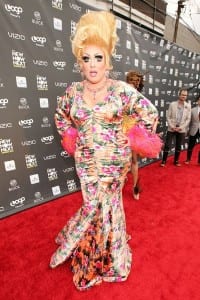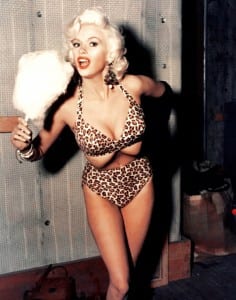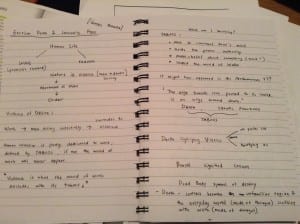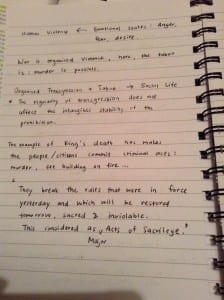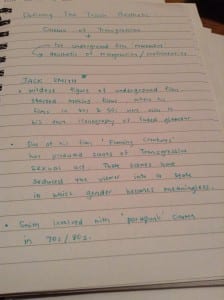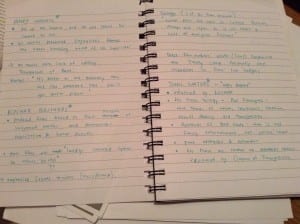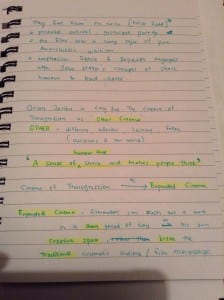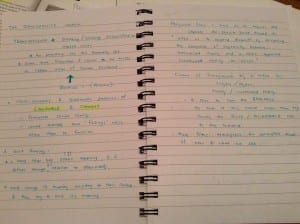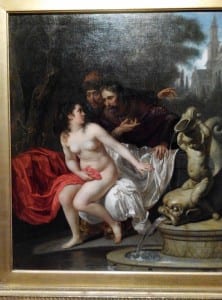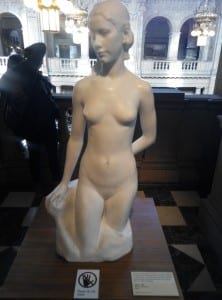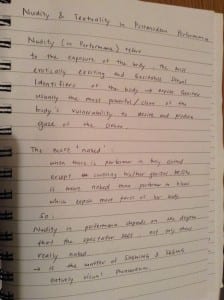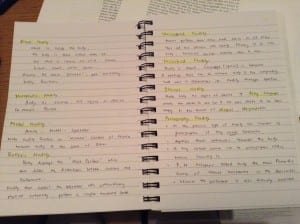LECTURE 3 & 4 ABJECTION
Abject: experienced or present to the maximum degree of something bad/completely without pride or dignity of a person or behaviour. hina
Abjection: the act of humiliating or degrading. kehinaan
POWER OF HORROR by Julia Kristeva
According to Kristeva, the abject refers to the human reaction (vomit) to a threatened breakdown in meaning caused by the loss of the distinction between subject and object or between self and other. The primary example for what causes such a reaction is the corpse (which traumatically reminds us of our own materiality); however, other items can elicit the same reaction: the open wound, shit, sewage, even the skin that forms on the surface of warm milk.
Food loathing is perhaps the most elementary form of abjection.
The abject marks what Kristeva terms a “primal repression,” one that precedes the establishment of the subject’s relation to its objects of desire and of representation, before even the establishment of the opposition, conscious/unconscious. Kristeva refers, instead, to the moment in our psychosexual development when we established a border or separation between human and animal, between culture and that which preceded it.
On the level of archaic memory, Kristeva refers to the primitive effort to separate ourselves from the animal: “by way of abjection, primitive societies have marked out a precise area of their culture in order to remove it from the threatening world of animals or animalism, which were imagined as representatives of sex and murder”. On the level of our individual psychosexual development, the abject marks the moment when we separated ourselves from the mother, when we began to recognize a boundary between “me” and other, between “me” and “(m)other.” The abject is also “a precondition of narcissism” , which is to say, a precondition for the narcissism of the mirror stage, which occur after we establish these primal distinctions. The abject thus at once represents the threat that meaning is breaking down and constitutes our reaction to such a breakdown: a reestablishment of our “primal repression.” The abject has to do with “what disturbs identity, system, order. What does not respect borders, positions, rules” and, so, can also include crimes like Auschwitz. Such crimes are abject precisely because they draw attention to the “fragility of the law”.
In phobia, Kristeva reads the trace of a pre-linguistic confrontation with the abject, a moment that precedes the recognition of any actual object of fear: “The phobic object shows up at the place of non-objectal states of drive and assumes all the mishaps of drive as disappointed desires or as desires diverted from their objects”.The object of fear is, in other words, a substitute formation for the subject’s abject relation to drive. The fear of, say, heights really stands in the place of a much more primal fear: the fear caused by the breakdown of any distinction between subject and object, of any distinction between ourselves and the world of dead material objects.
The abject for Kristeva is, closely tied both to religion and to art, which she sees as two ways of purifying the abject: “The various means of purifying the abject—the various catharsis (a release of emotional tension)—make up the history of religions, and end up with that catharsis up to the standard of excellence called art, both on the far and near side of religion.
Question: Is it Martin’s work that he hits his chest and force the mucus vomit out from his mouth consider abject art?
THE RETURN OF THE REAL by HAL FOSTER
The Artifice of Abjection
Abjection is a condition in which subject hood is troubled.
To abject – is to expel, to separate
To be abject – is to be repulsive, stuck, subject enough to feel this subjecthood at risk.
AN INTIMATE DISTANCE: WOMEN, ARTISTS & THE BODY by Rosemary Betterton
Fear and loathing of the female body has a long and well founded tradition within European culture, the true nature of women has provoked desire and disgust. ‘To be a woman in her natural state is to invite disgust.’
Femininity and the consumption of food are closely connected, in women, fatness is taken to signify both loss of control and a failure of feminine identity. ‘Woman-shame-fat’.
Betterton has given an example: When I looked at the shape of my body I was ashamed of being a women, I wondered what men really thought about women – I was humiliated being a woman and annoyed to feel anyone looking at me. Somehow this shows that fat has abject the woman? The power of gaze is from the man.
After the writer gives a short description of a film, she comes out with a statement: ‘Fat women are mad and murderous.’ I personally see the hidden message behind this statement. Fat women is scary, psycho, non-normative. It somehow warn the women not to become fat, other wise they will fall into this category of failure. This is completely a social constructively towards woman’s body.
Female body becomes the focus of cultural anxiety and disgust, in art works made by women that deal with the body’s margins and its erotic pleasure, exploring the fascinations and fears of our own changing, consuming and desiring corporeal being.
. . . . .
Feminism, Femininity and Transgression in Art
Abject art described as work that suggests abject materials such as dirt, hair, excrement, dead animals, menstrual blood and rotting food in order to confront taboo issues of gender and sexuality. Abject work consider inappropriate by conservative, dominant culture.
There is a range of practices by women artists using the ‘forbidden’ materials and images in art to explore sexual themes, somehow created a transgressive femininity in the art.
Some examples are Judi Chicago’s Red Flag and Carolee Schneeman’s Interior Scroll. Revealing hidden aspects of women’s bodies such as menstruation (often conceived as unclean), and their aim was to challenge the silencing of women’s sexuality within culture.
1970s, female body could be represented unfolding petals of a flower (I think it means to search the internal part of women’s body, yet it might be not so violence).
1990s, artists works are more likely about the fear and fascination of women’s bodies. Since the increased number of AIDS, the sexual body has displayed both disease and desire, breaking boundaries to invoke the disturbing fantasy of body-in-pieces. Contains violent imagery that brings out strong emotional and physical responses. But then the artist realise shocking the work may be less significant than the exploration of the body as a problematic site which disrupts normative assumptions of gendered difference, so replaced by attempts to represent experiences of the feminine body that are physically and culturally determined.
. . . . .
The Mouth is Interesting Because It Is One Of Those Places Where The Dry Outside Moves Toward The Slippery Inside
The focus on food as a primary source of abjection. Food enters the body from outside, crossing the dividing boundary between the self and that which is external to it.
The powerful taboos on ‘unclean’ food. The writer gives an example: a single hair from the head appears as a shining line of gold in the light, but the same hair swallowed in a mouthful of food makes us gag with disgust. This is because we feel the hair is unclean, bodily waste and we not suppose to eat hair. Yet, not all bodily margins and wastes are equally dangerous and not interpreted in the same way, because each society construstc its own systems of marginality. ‘Each culture has its own specific risks and problems.’
Symbology: taking some image of food and find its symbol that relates to sex.

 photographs by Hannah Collins.
photographs by Hannah Collins.
In my cultural, some young people will refer oyster as varginal because there are some similarities in them, the wetness, maybe the color and the image. In these two pictures, I somehow able to relate them with varginal too especially the second photograph, the hair and the disgusting reddish in the middle makes me imagine of varginal.
‘I think human most desire things are food and sex which are one of the basic needs of being. Therefore, it might be easier to relate both desires together.’
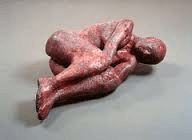
Kiki Smith’s blood pool – provoke juxtaposing reflection of disgust and desire with showing the naked body which can be erotic (desire) but the whole body is like burned and cover with blood (disgust).
The writer explain Kristeva’s abject theory:
One of the abjection is the process of separating our infant selves from our parents.
Abjection is the psychic expression of fears associated with that archaic(no longer in everyday use) dependence and the loss involved in becoming an independent subject. Kristeva thinks that food is the ABJECT that sets up archaic relationships between human being and its other.
Nicoletta Comand’s installation of The Food I Ate Turned into Flesh, shows the fascination and fear of food, about eating disorder. Try to relate food and femininity, which I don’t really understand.
Food offers a way of exploring the pleausre and dangers of the body’s limits which are particularly relevant to women, because food is culturally gendered as feminine and because it provides means of discovering the contradictory and often unresolved feelings relating to feminine identity and maternal loss.
LECTURE 5 Pornography & Eroticism
IntroductionTo Eroticism by Bataile
In this article, the writer define eroticism as the goal of reproduction and the desire for children. Reproducing implies the existence of discontinuous beings, beings which reproduce themselves are different from one another, and the reproduced one are different from each other, just like they are different from their parents. All of them were different. He is born alone, he dies alone. There is a discontinuity between one and another.
The writer explain more deeper, the gulf exist just like between you listening to me and me speaking to you. We are attempting to communicate but no communication can abolish our fundamental difference. If you die, it is not my death, therefore we are discontinuous beings.
Writer intention to suggest that, ‘death means continuity of being. HOW? Reproduction leads to the discontinuity of beings, but brings into play their continuity; it is intimately linked with death. Death is to be identified with continuity, and both of these concepts are fascinating, This fascination is the dominant element in eroticism.’
I need further explanation about this suggestion.
We are discontinuous beings, individuals who perish in isolation but we yearn for our lost continuity.
There are 3 type of eroticism: Physical, Emotional, Religious. To replace for individual isolated discontinuity a feeling of continuity.
Religious eroticism – something like seeking after God’s love.
The domain of eroticism is the domain of violence, of violation. As the writer mentioned, the most violence thing is death which makes us obsess with the lastingness of our discontinuous being. The violence can be our own imagination.
The whole business of eroticism is to destroy the self-contained character of the participators from their normal lives. Where both female and male attaining the same degree of Dissolution, the female (passive) is the one that is dissolved as a separate entity/body, while the male is the dissolution of the passive partner.
Nakedness offers a contrast to self-possession(control). It is a state of communication revealing a quest for a possible continuance of being beyond the confines(keep the limit) of the self. Bodies open out to a state of continuity that gives us a feeling of obscenity (kelucahan) which upset the physical state of self-control of the stable & recognise individuality.
According to the writer, stripping naked is the act full significance of the act of killing, that eroticism was linked to the act of love with sacrifice, which writer think this as religious eroticism. But the female partner in eroticism was seen as the victim, male as sacrificer.
Eroticism & Art by Mahon
The origin of the word erotic was from Greek which defined as sexual desire or passionate love, the life drive itself. The Greek notion has a range of expression for eros/erotic, from thoughts of desire and their representations in art and literature, to the sexual act itself.
The pleasures and desire of the flesh are only distraction, and sexuality as obstacle to spirit. by Plato in Symposium
David Hume: ‘Sexual love makes of the loved person an OBJECT of appetite; as soon as that appetite has been stilled, the person is cast aside like a lemon which has been sucked dry.. Taken by itself it is a Degradation of human nature…that is why we are ashamed of sexual desire.’
Sexuality, sexual desire and the body are proposed as a THREAT to rational and civilized society. Eroticism is like to emotions has the power to bother the mind, the soul and to disrupt order. This struggle (between Eros & knowledge, emotions & reason, the flesh 7 the spirit, sexual expression & repression) is at the heart of erotic art. When erotic is being apply in art, there is the battle between body and the mind: it also speaks to our desire for a communion with other, our passion of life, our fear of mortality.
Human sexuality is unlike animal, it is restrict by social custom by TABOOS which certain acts are forbidden. The essence of eroticism lies in the transgression of these taboos. ‘eroticism presupposes man in conflict with himself.’ ‘man’s erotic urges terrify him.’
Erotic Art is all about jouissance(a pleasure but also as sexual climax and the bliss of enjoyment without fear of the costs), shifting from visual pleasure to the pursuit of pleasure without concerns about rules, ends, or closure. Artist used erotic to address the classicla ideal, beauty of our basic sexual desires for a greater moral good. But in the 19 & 20th centuries, artists increasingly used erotic for the danger it could pose to art and society rather than show the beauty of it. The danger which has the power to threaten the orderly balance like what Plato and Kant have recognised.
The big different between erotic and pornographic lies in the intent. Pornography main intent is to stimulate sexuality (sex or masturbation), it also invloves financial power for example pornography film 7 magazines exist for the purpose of making money. The writer stated that pornography draws on individual’s desire and fantasies, often deriving from childhood memories and fantasies, that long repressed by social conditioning – individual’s fantasy relationship with other is key to pornography’s fundamental relationship with power, but not with sex or Eros.
Consent: permission to do something/agreement to allow something to happen.
Consent is the key distinction between the erotic and the pornographic: consent allows sexual diversity(preference for heterosexual, gay, lesbian,S/M) in eroticism. It also ensures sexual ethics: pornographic description, staging, enactment of rape…in which there is graphic connection between sex and violence, pain, humiliation. There is an imbalance power between the members.
Erotic Art is different. It is about equality between members of opposite/same sexes. Erotic art challenges and produces power, exploring the nature and role of eroticismin in society of sexual desire and art itself. Eroticism as a means of pushing back the boundaries of art practice and aesthetic norms, which means to challenge socially accepted codes of sexual behaviour.
SEX IN ART: Pornography and Pleasure In The History of Art
The debates between art & pornography, pornography & censorship are very subjective business.
Taste, choice, categorisation and classification defines the viewer, the reader, the consumer. Censorship defines a culture and it’s limits. Like sensitive novelists seldom writes about sex scenes because they know that what they write defines themselves, Censorship is largely political, the purpose of censorship has been political: suppression.
Writer gives an example of men do not want to see mothers breast-feeding in public, because they think it is embarrassing.
‘Pornography is an emotive subject.’
For pornography to work, it needs a reader, a viewer, a consumer. Pornography subjectivity and objectivity are merging together because it is both the object and the subject of desire, the representation and the reader/consumer are impossible to separate., it is a package.
Virtual reality sex, sex without touching with our making contact with anything but the demand on computer, internet, video that generated retinal image.
Pornography is about male power, the degradation of the female is the means of achieving this power. Like Andrea Dworkin uses pornography as a way of showing how men control so many aspects of life, and how men express their hatred of women.
In pornography, the signifier is the phallus, while the site of pleasure is the woman’s body. It is both a pleasure machine and a fantasy.
Even the lesbians pornography is still works within patriarchy, within male-made structure. Lesbianism is not truly outside of heterosexuality and patriarchy because they were merely imitating the patriarchal structures.
Female nude is the apotheosis of ‘high art’, yet it is in the borderline between art and pornography. Female nudes of high art type have been made for clients. Same to pornography. The high art nude is a site of political and economic manipulation, an expression of the power relations between patron and painter. The boundaries between art and pornography are being constantly blurred, reset, rewritten.
